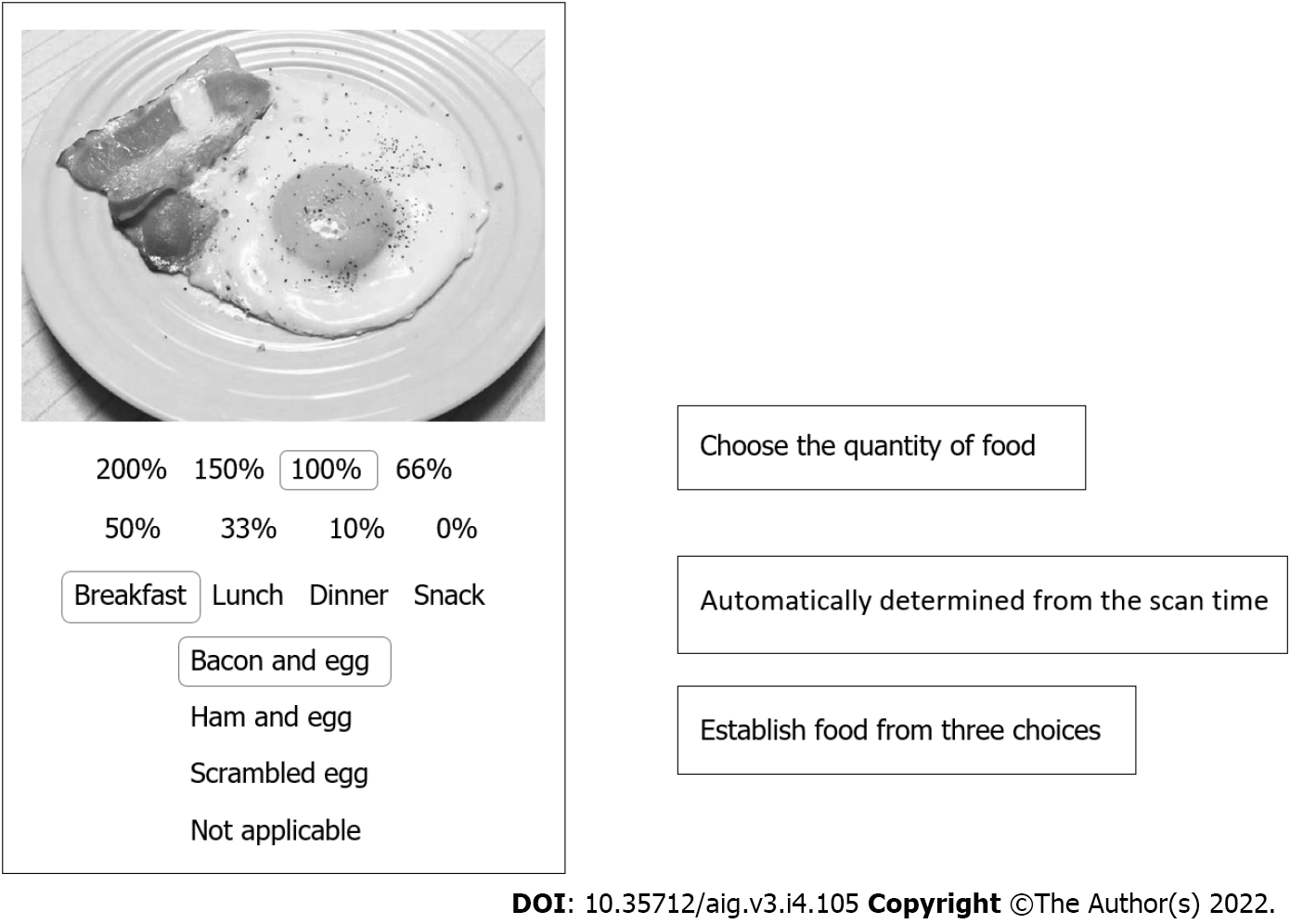Copyright
©The Author(s) 2022.
Artif Intell Gastroenterol. Oct 28, 2022; 3(4): 105-116
Published online Oct 28, 2022. doi: 10.35712/aig.v3.i4.105
Published online Oct 28, 2022. doi: 10.35712/aig.v3.i4.105
Figure 2 Display on the iPad Mini.
Instead of using a smartphone as the device, an iPad Mini, which has a larger screen, is used. When a patient photographs a food item, the artificial intelligence suggests the names of three possible food choices. The patient selects the food that he or she ate from one of the three choices. If none of the three choices matches, the patient chooses “no suitable choice.” Next, the patient selects the quantity of food consumed from the list of options. Eight options are available. Setting 100% as the normal serving size, the choices are as follows: 200%, 150%, 100%, 66% (about two-thirds), 50%, 33% (about one-third), 10% (about one bite), and 0% (picture was taken but no food was consumed). Breakfast, lunch, dinner, or snacks are automatically determined based on the time that the foods were photographed.
- Citation: Kusano Y, Funada K, Yamaguchi M, Sugawara M, Tamano M. Dietary counseling based on artificial intelligence for patients with nonalcoholic fatty liver disease. Artif Intell Gastroenterol 2022; 3(4): 105-116
- URL: https://www.wjgnet.com/2644-3236/full/v3/i4/105.htm
- DOI: https://dx.doi.org/10.35712/aig.v3.i4.105









